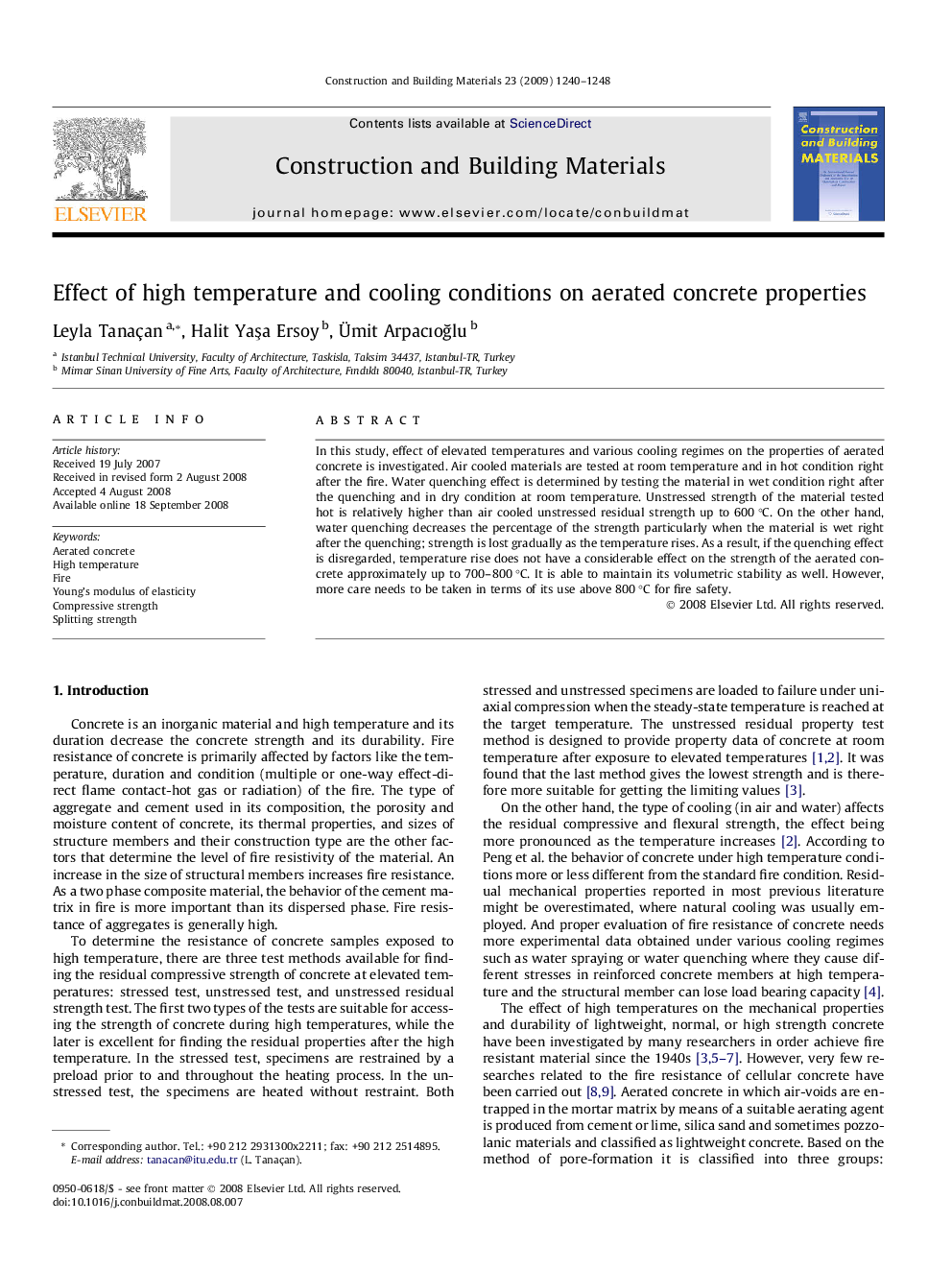| Article ID | Journal | Published Year | Pages | File Type |
|---|---|---|---|---|
| 260284 | Construction and Building Materials | 2009 | 9 Pages |
In this study, effect of elevated temperatures and various cooling regimes on the properties of aerated concrete is investigated. Air cooled materials are tested at room temperature and in hot condition right after the fire. Water quenching effect is determined by testing the material in wet condition right after the quenching and in dry condition at room temperature. Unstressed strength of the material tested hot is relatively higher than air cooled unstressed residual strength up to 600 °C. On the other hand, water quenching decreases the percentage of the strength particularly when the material is wet right after the quenching; strength is lost gradually as the temperature rises. As a result, if the quenching effect is disregarded, temperature rise does not have a considerable effect on the strength of the aerated concrete approximately up to 700–800 °C. It is able to maintain its volumetric stability as well. However, more care needs to be taken in terms of its use above 800 °C for fire safety.
